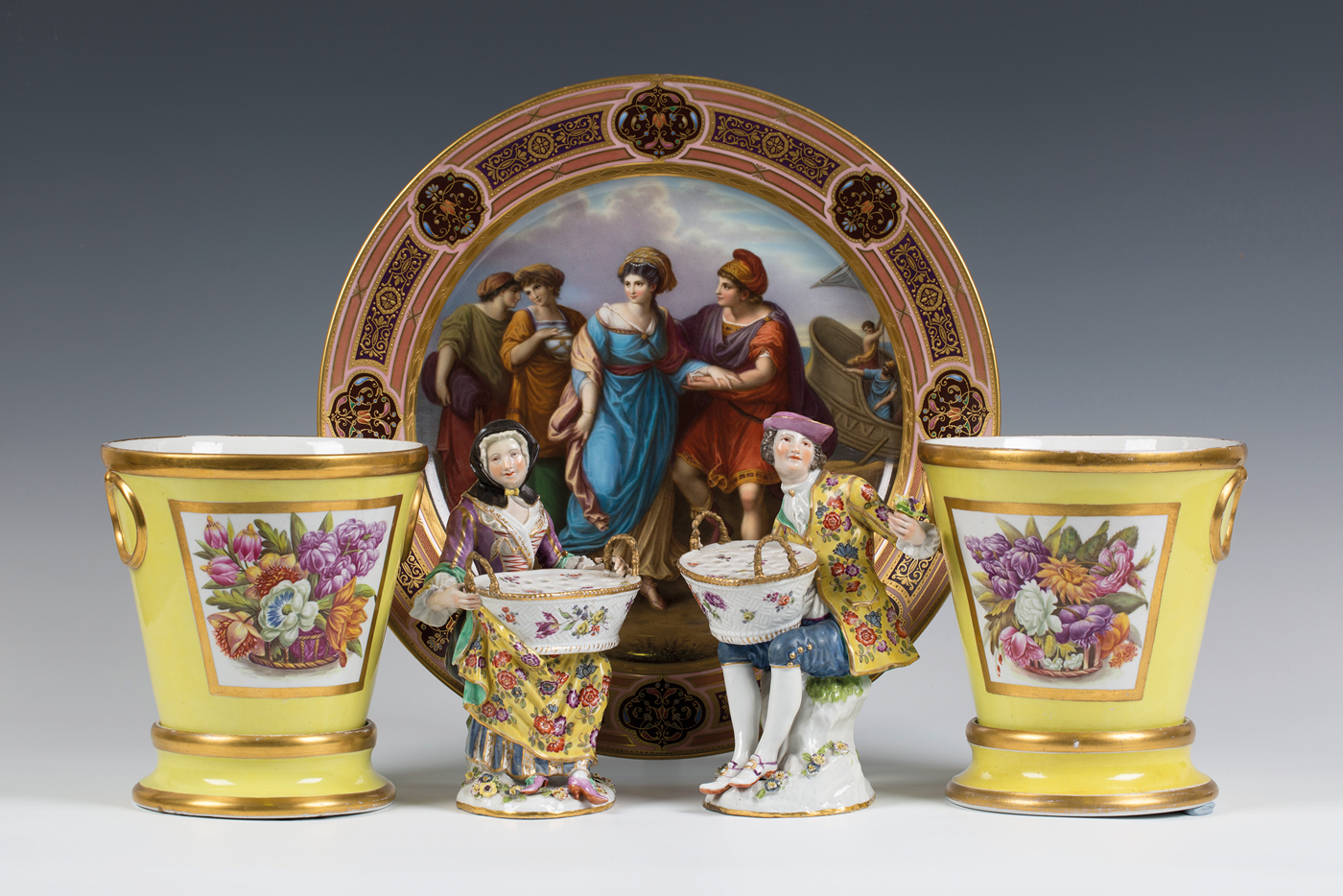
In the late 17th century ‘porcelain fever’ struck Europe. Petworth’s Elizabeth, Duchess of Somerset, was an avid collector of Chinese blue and white porcelain, a passion she shared with her friend, Queen Anne. Porcelain became associated with wealth and status and the balance of payments with China worsened.
The search for the mysteries of making hard-paste porcelain became the focus of alchemists (18th century chemical engineers) across Europe.
It was Johaan Friedrich Böttger (1682-1719) who invented European hard-paste porcelain at the Meissen factory under the patronage of Augustus the Strong, Elector of Saxony and King of Poland. It is humbling to reflect that more money was invested to invent porcelain in Europe than it cost a later generation to put a man on the moon.
In 1731 Johaan Joachim Kändler (1706-1775) joined Meissen, becoming the chief modeller at the factory in 1733. Art and science came together to make Meissen the first and pre-eminent
Porcelain manufactory in Europe for much of the 18th century. Kändler moved effortlessly from the Baroque to the Rococo style.
The pair of late 18th centuy Meissen porcelain bouquetière figures illustrated are modelled after Kändler. They depict a lady and gentleman seated on rococo rockwork bases holding oval baskets. The vivid broad patches of coloured glazes in the costumes sets off the undecorated glittering areas of precious hard-paste porcelain. The figures are typically marked with underglaze blue crossed swords and incised numerals.
The beautiful Coalport porcelain jardinères, seen here without their stands, date from 1805, the same date as Nelson’s famous and tragic victory at the Battle of Trafalgar. Based in Shropshire the factory was founded by John Rose. He ran it successfully until hs death in 1841. Although influenced by Sèvres porcelain Coalport has a particular English quality. The jardinères’ delicious bucket shape, yellow ground and soft gilt lines frame botanical studies of extraordinary delicacy and quality. They bear no marks and yet are perhaps the most valuable pieces shown here. Their attribution to Coalport was possible by comparison with a similar known jardinère illustrated in Michael Messenger’s ‘Coalport 1795-1926’.
The elaborately decorated porcelain charger was made at the Vienna factory in the 19th century. Vienna was the second factory to make hard-paste porcelain in Europe. From 1784 Konrad von Sorgenthal took over direction of the Vienna factory. Much of its output was influenced by the French late Neo-Classical style so closely associated with the tastes of Napolean Bonaparte, later Napolean I.
19th century production at the factory continued in the Sorgenthal style with Neo-Classical shapes and Empire decoration, though it was also influenced by the middle-class sensibilities of the Biedermeir.
The later 19th century Vienna porcelain charger is richly painted with classical figures in a harbourside setting. The pink ground border with its alternating chocolate brown enamelled and gilded panels opulently frames the scene. You see here that the decoration now entirely covers the porcelain. It is marked with an underglaze blue shield mark to the base.
At auction today these pieces would range from mid to high hundreds of pounds.
I am excited by how strong the interest has been during the lockdown for a wide range of collectors’ items, antiques and art.
All being well, and the ‘R’ number willing, Toovey’s will reopen to the public by appointment this coming Monday 15th June 2020. We have a series of specialist sales already scheduled for the coming weeks so do email us to make an appointment to meet our valuers, virtually or in person.